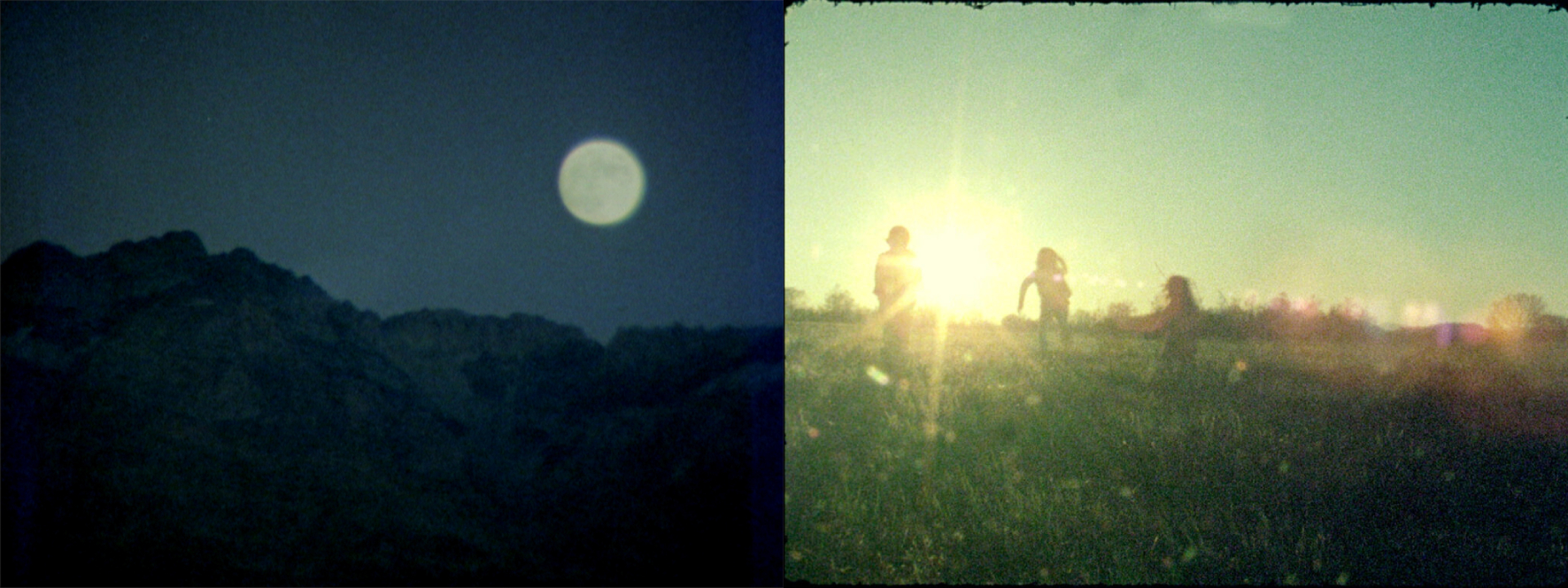Illegal_cinema
SESSION 108, ILLEGAL_CINEMA
by
Screening of Chimera (Haris Epaminonda, 2019) and Four Roads (Alice Rohrwacher, 2021) proposed by Lide Mikele Billelabeitia Uriarte and Maria Muriedas Diez, followed by a discussion.
“Is there still, on the edges of hypervisibility, of virtuality, room for an image? Room for an enigma? Room for a power of illusion, a veritable strategy of forms and appearances? (…) forms are not free, figures are not free. They are on the contrary bound: the only way to liberate them is to chain them together (…)”
[Jean Baudrillard, The conspiracy of Art, 2005, pp. 127]
In today’s context of hypestimulation by images, reviving obsolete media like Super 8 leads us to observe our surroundings in a more conscious way. Furthermore, opting for the dilated time of the analogue medium can entail a process of resistance or negation, in this way posing a different way of looking, conditioned by other temporalities, accidents or its own plasticity.
In our commitment to Super 8, for this session we have decided to present together the works of two women who synthesise the characteristics of this medium in very different ways: Chimera (2019), by Haris Epaminonda, and Four Roads (2021), by Alice Rohrwacher.
The film Chimera (2019, 30’’) by Haris Epaminonda consists of a flood of meditative images of abandoned places and landscapes in a field of tension between memory and dream. She combines these images with found footage to create unimaginable connections and narrations that oscillate between memory and conceptual construction. The bridge or adhesive for constructing these special connections is Super 8. In a very different way, Alice Rohrwacher in her film Four Roads (2021, 8’’) connects a story narrated by a voice in off with images recorded during the pandemic. The story is constructed on the basis of a very simple way of observing and describing her neighbours, which combined with the images gives shape to a whole. By selecting these works we aim to contrast the dreamlike and strange images of Epaminonda with the simpler and more intimate treatment of domestic images by Rohrwacher. In this way, based on Super 8, our aim is to generate a conversation about the dichotomy between what is strange and what is familiar.
Lide Mikele Billelabeitia Uriarte (Mungia, 2001). She works with audio-visual media, photography and sculpture. Her works analyse conscious and different ways of relating to the materiality of things.
Maria Muriedas Diez (Mungia, 1994). She works with audio-visual media and photography. At present her interest is focused on dream-states, the creation of situations and the specificities of these media as devices for recording.
